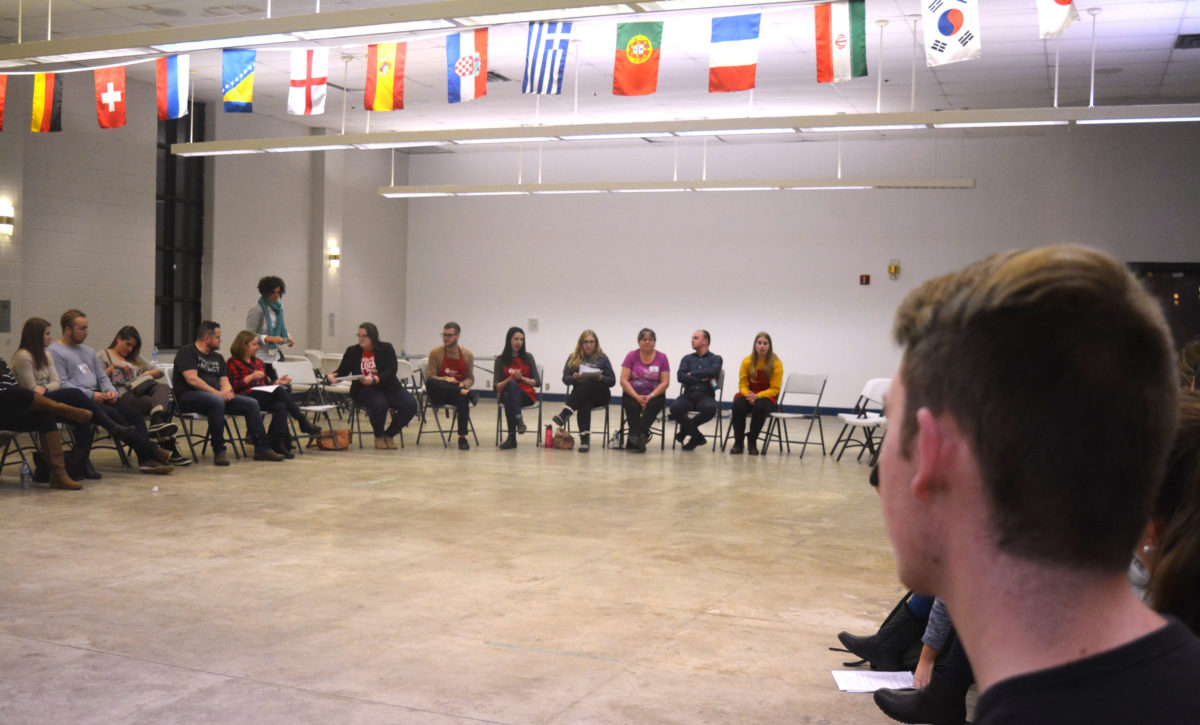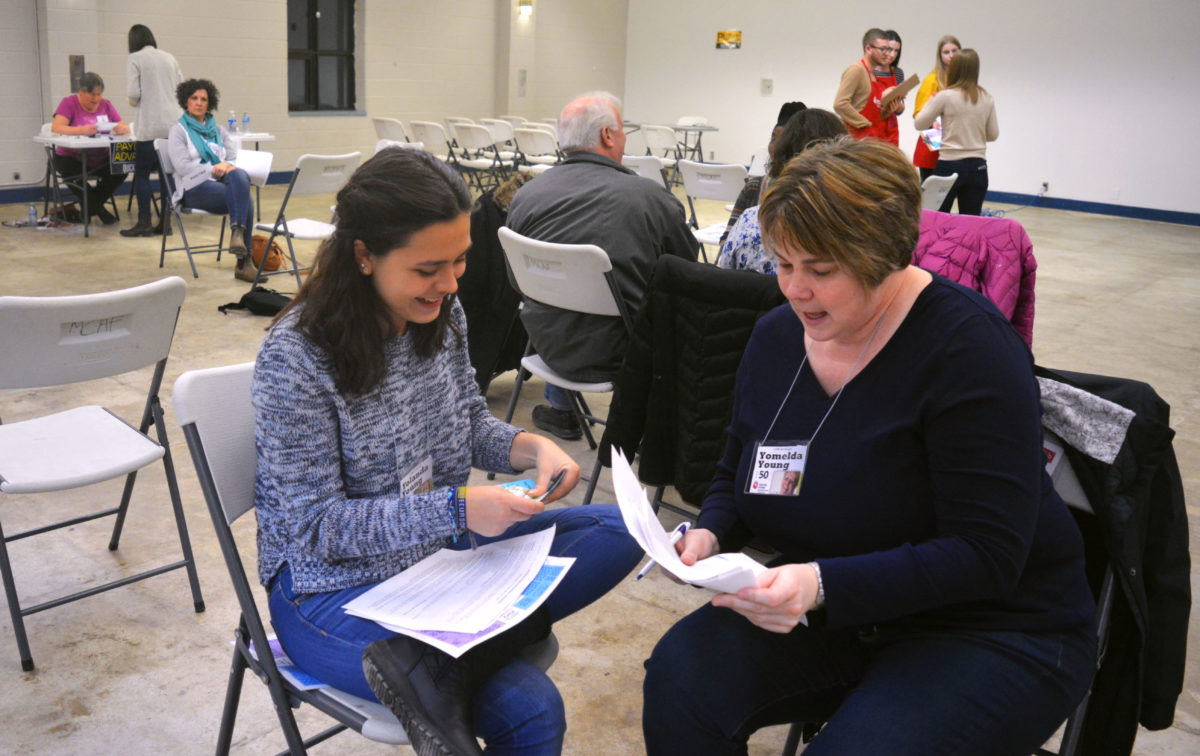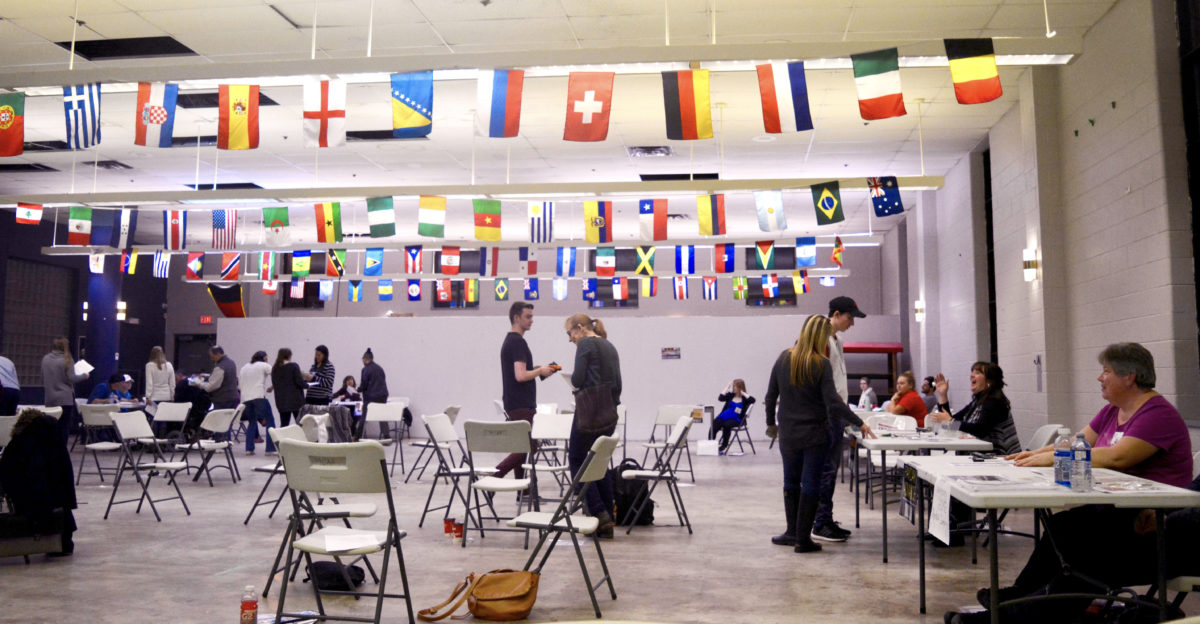
For about 123,000 New Brunswickers, poverty is their reality.
In order to battle the ‘it doesn’t affect me, therefore it’s not my problem’ mindset, United Way Central New Brunswick arranged a poverty simulation at the Multicultural Association of Fredericton on Nov. 29, called Living on the Edge. It put people in the shoes of those who are struggling to make ends meet with a monthly poverty income.
According to the 2018 Child Poverty Reduction Report Card created by the Saint John Human Development Council, the poverty line is $28,884 for one parent with one child.
Katie Beers, communications coordinator for United Way, believes it’s important for people to understand the hardships others face.
“We felt that it’s so important as individuals who live in privilege to educate ourselves about what people who don’t have privilege experience on a day-to-day basis,” she said.
“We completely acknowledge that this is not a lived experience. This is not the type of environment that people in poverty experience.”
During the one-hour simulation, participants were asked to play the role of a family in poverty for four weeks.
The hour was broken up into four 15-minute weeks, where individuals were put in real-life scenarios.

In that time, they had to pay for food, utilities, loans, clothing, medical expenses and school supplies, among other expenses. Groups were given specific monthly incomes. One group was given $1,056 or $892.32 after taxes.
At the end of the simulation, participants met for a debrief to share their own experiences.
“The simulation is set up to ensure that you fail,” Beers said. “So that you can have some of those stressors and emotions and frustrations that people who navigate the system of poverty experience everyday.”
Many people during the debrief expressed the stress they felt during the simulation.
Sarie Durelle and Brandon Case, St. Thomas University students, were both volunteers at the event, and saw the different perspectives of struggle as facilitators.
Durelle worked at the simulated social development office. Many people had to visit her multiple times, not receiving the service they hoped for.
“We spent so much effort and time off work … and you can’t help me? How dare you?” Durelle heard from one participant feeling the stress from the simulation.
Case said this event helped him realize the harsh reality of living in poverty.
“So many people are lucky to never have to live in poverty,” he said. “It’s a real opportunity to just take an hour and just submerge yourself.”

Kayla Doody, a STU student and a part-time worker with United Way Central New Brunswick, said this simulation is representative of how some people live their lives day-to-day.
“I think it’s so much more than a poverty simulation, it’s a life simulation for so many people,” she said.
In the future, United Way Central New Brunswick hopes to bring the poverty simulation to schools.
Megan Folkins, a Grade 9 teacher at École Sainte-Anne, would like to use the simulation as a teaching tool for her students.
“I really hope to pass on to my students the perspective that none of us are immune to poverty,” she said. “There is nobody that this couldn’t happen to.”
United Way Central New Brunswick hopes to raise awareness homelessness in Fredericton. Beers thinks this event helped people understand that it’s a harsh reality for some.
“We really pushed through with [the event] in the time of crisis when people are feeling empathetic for those who are homeless and for those who are living in poverty,” she said, “[and] taking that opportunity to educate the general public on what that’s like.”
